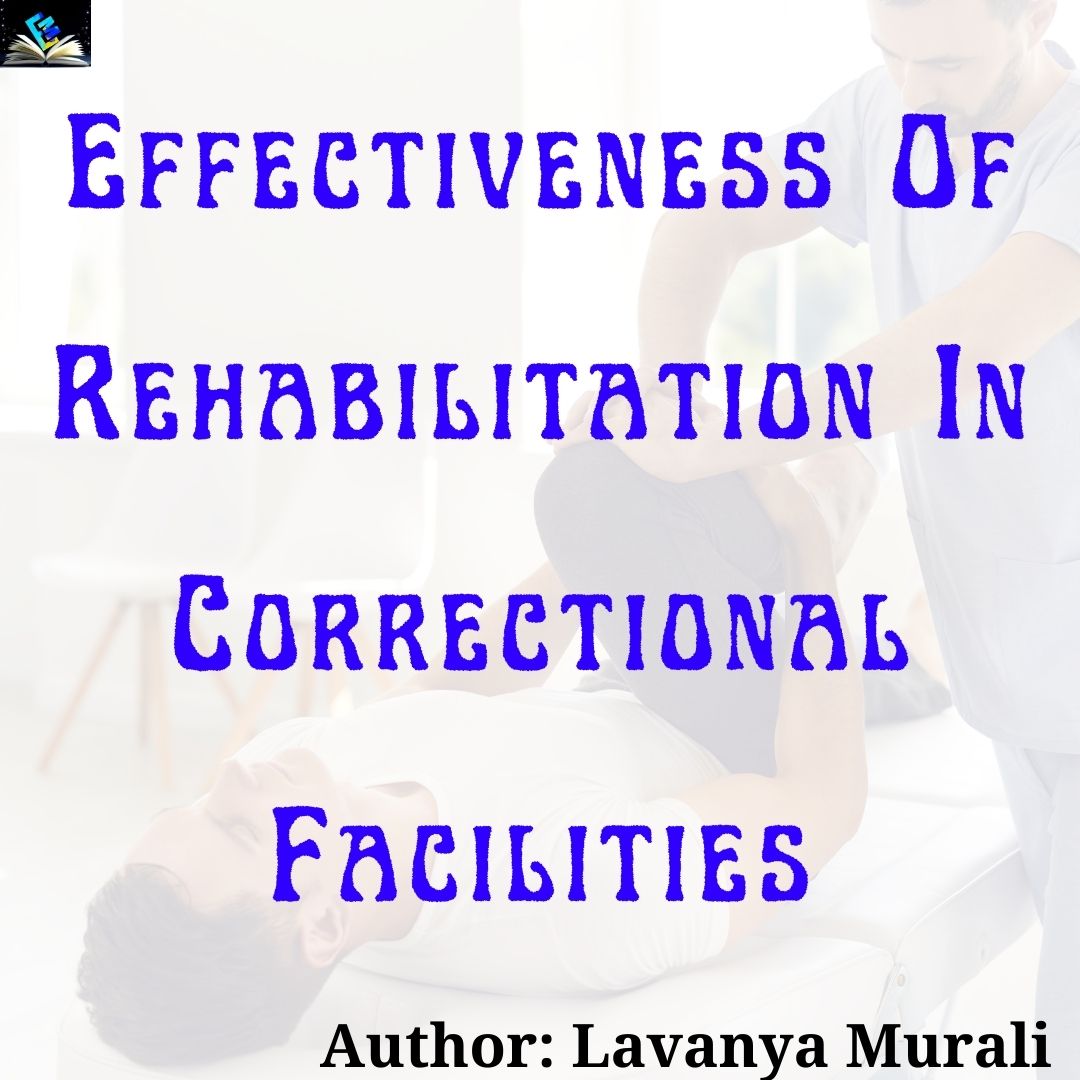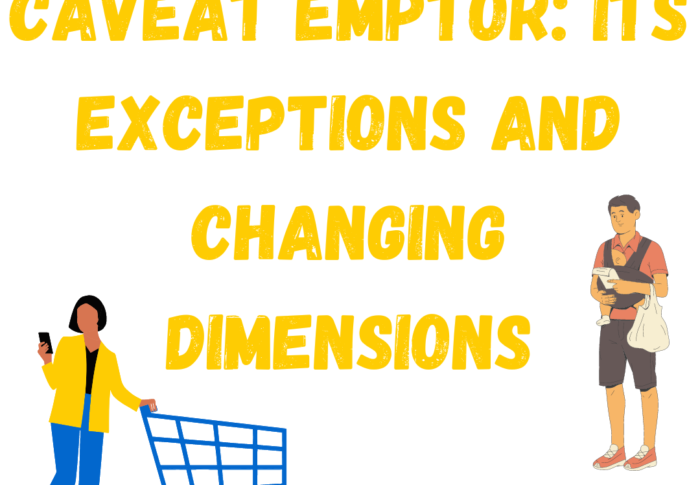
Effectiveness Of Rehabilitation In Correctional Facilities
Keywords- Rehabilitation, correction, affectiveness
Author: Lavanya Murali
Introduction
Rehabilitation is one of the four goals of corrections – retribution, deterrence, incapacitation, and rehabilitation. When incarcerated criminals are kept in correctional facilities, they are often offered a series of rehabilitation programs that seek to reduce the likelihood that they would become repeat offenders once they are released from the facility. Rehabilitation allows the offender to transition and smoothly adjust to society, reverting to his former responsibilities, with the least amount of mental strain on the offender as well as the surrounding society.
The types of rehabilitation programs depend on the institution and the types of inmates. They get rehabilitation opportunities that they may not encounter in a different environment, and the programs are designed to address a range of issues from depression to substance abuse and anger management. Recidivism is the goal that most of these facilities hope to achieve through rehabilitation. Five years after conviction, there is a 27 percent lower risk that convicts who have been in prison have committed new crimes, compared to those who were given more lenient penalties, like probation and community service (Kvalvaag, 2016). To achieve this, it is important to first address the causes of recidivism in ex-convicts.
Risk Factors
The significant risk factors that contribute to this, according to the California Department of Corrections and REHABILITATION:
- Antisocial Behavior – They are unable to avoid criminal activity when placed in high-risk situations.
- Antisocial Personality – They display impulsive, aggressive, manipulative or exploitative behavior.
- Criminal Thinking – Their attitudes, beliefs and values can indicate an inclination towards repeat offenses.
- Antisocial Relationships – Their interactions and relationships consist mainly of associations with criminal counterparts. They do not get along with others.
- Family and Marital Status – Their relationship with the family is poor.
- School and Work Status – Their status at work or school is low, with poor performance, and they do not actively involve themselves in these institutions.
- Leisure and Recreational Activities – Even leisure activities that do not have some sort of criminal involvement do not interest them.
- Substance Use – Problems with drugs and alcohol can lead to repeat offenses.
Rehabilitation
Rehabilitation strategies are largely dependent on the crime, the sentence and the disposition of the inmate. There exist major disparities between the Western countries and Scandinavian countries in terms of criminal incarceration systems. In places like Norway, the system is focused on job training and rehabilitation. Western countries, there are major differences in the incarceration systems. In Scandinavian countries such as Norway, the prison system focuses on rehabilitation and job training.
A study done by the University of Bergen found that work alters criminal patterns and behavior, and labor-intensive rehabilitation programs give people opportunities that people who do not receive this kind of rehabilitation do not get. Work training, of course, is more difficult when the convict is released, since there seems to be an element of coercion that needs to be involved. In India, the prison system has guidelines and policies addressing rehabilitation and re-entry programs, yet the movement of rehabilitation of prisoners seems to remain stagnant in the budding stage since policymakers and social planners are yet to bring their attention to this in a productive manner.
India and International Scenario
In India, and many other countries around the world, as a result of prison overcrowding, the rehabilitation programs are simply activities that keep the inmates busy and away from antisocial acts. This truly undermines the effects of rehabilitation. In its ideal form, a rehabilitation program is designed to maximize the involvement of an inmate and create an interest to bring about their greater psychological and emotional well-being and also allow them to learn and develop skills. The scarcity of space and resources puts the idea of individualized plans on the backburner and inmates may even view their classes and programs as idle time or even a form of punishment.
The rates of mental health issues among prisoners are consistently higher than those among the general population, yet mandates only require adequate mental health services to be provided to those with “serious or severe ” mental health issues. Without access to mental health services, correctional rehabilitation programs might be rendered redundant. Providing these services must become a necessity and not a luxury. The fundamental problem lies in their philosophy of corrections, which is punishment-oriented, as opposed to rehabilitation. The effectiveness of incarceration as a way to reduce repeat offenses has proved to be unsuccessful. For many juvenile delinquents, spending time in a large detention center can increase the rate of repeat offenses. To shift the paradigm from punishments to rehabilitation, psychologists are researching the psychological effects of penal servitude and the causes of criminal behavior.
Loopholes
In the past few decades, there has been a gargantuan increase in the amount of literature surrounding these areas and the common findings seem to be that individual-focused approaches to preventing crime must be complemented by community-based rehabilitation programs, to facilitate their proper adjustment into society. When implemented properly, rehabilitation programs, job training, education, and psychotherapy can ease their transition. Re-entry programs are integral to effective adaptation into society. The Stanford Prison Experiment showed that even psychologically healthy people could develop mental health issues. Including depression and anxiety when placed in prison environments.
Another important problem to be addressed; however, is that there are not enough psychologists working in the criminal sector. As well as the load on the existing psychologists is extremely high. They are forced to take on a great number of cases and are often overworked. As a result, many screening processes ignore disorders like depression. Since it may not be as serious as schizophrenia, and such disorders are left largely untreated in the facilities. There is also the responsibility that falls into the hands of the prison officers in terms of rehabilitation & prison control. Violent outbreaks can hinder the progress of rehabilitation, and one may have to begin from step 1 all over again.
Controlling criminal behavior and rehabilitating them can be a difficult job, but it is a necessary one. Convicts need to be released in such a manner that they can adjust to society without too much distress. For this, inmates must be controlled, rehabilitated and released. There is no guarantee that this will reduce public fear or prejudice of offenders. Yet this process is integral in the reduction of such fears.
Contact at edumoundofficial@gmail.com






